Shevlin Sebastian's Blog, page 92
April 10, 2016
Under the Yoke Of Oppression
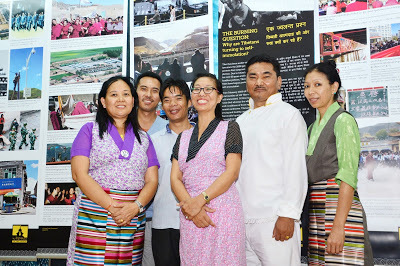
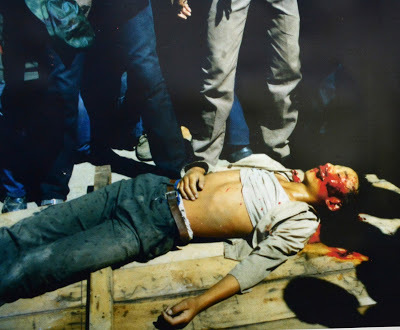 'A Long Look Homeward', a travelling exhibition of photos from the permanent collection of The Tibet Museum, Dharamshala, as well as artifacts from the Friends of Tibet, had a showing at Alleppey, Kerala
'A Long Look Homeward', a travelling exhibition of photos from the permanent collection of The Tibet Museum, Dharamshala, as well as artifacts from the Friends of Tibet, had a showing at Alleppey, KeralaPhotos: A group of Tibetan men and women at the exhibition. Among them is Dorjee Rapten Neshar (second from right), the Chief Medical Officer of the Tibetan Medical and Astrological Institute at Bangalore. Photo by Ratheesh Sundaram; Gonpo Paljor, a young Tibetan protester who was shot dead
By Shevlin Sebastian
On the ground in front of the Centre for Political and Social Art building at Alleppey, Kerala, there are cashew and mango trees. Thanks to a steady breeze, blowing in from the Arabian sea, the leaves are making a rustling sound. It is, indeed, a peaceful scene. But when you step in to view 'A Long Look Homeward', a travelling exhibition of photos from the permanent collection of The Tibet Museum, at Dharamshala, as well as artifacts from the Friends of Tibet organisation (March 3-5), the scene is anything but peaceful. Right opposite the entrance is a photo of Gonpo Paljor, a young Tibetan protester who is lying on wooden slats, on the ground, with a blood-spattered face. Because of the low angle of the shot, only the shoe-clad feet of the people standing around can be seen. On March 5, 1988, Gonpo was fatally shot in the head by the Chinese during a protest demonstration. Next to Paljor, are a series of photographs which show the systematic destruction of monasteries and religious institutions. They include the ruins of the Ganden Monastery, founded in 1409, and destroyed during the Chinese Cultural Revolution of 1985, Yumbul Kang, Tibet's first fort, which was built in 127 BC, as well as the Radreng Monastery, which was founded in 1057.
“Since the Chinese occupation of Tibet in March, 1959, over 6000 buildings have been destroyed,” says Tashi Phuntsok, Director of The Tibet Museum. “Ancient images and sculptures have been melted and sold in international art markets.” In the early years of the occupation the Chinese had used the holy scriptures as shoe soles. “There are four themes: Invasion, Destruction, Resistance and Community in Exile,” says Sethu Das, President of Friends of Tibet. A total of 115 photographs are on display.
Apart from that, there are the coins and currencies of Free Tibet and a folded green uniform of the hated People’s Liberation Army of China.
At one corner there is an old-style Zenith radio. A couple of years ago, when the Dalai Lama came to Kochi, Sethu told him, “Your Holiness, do you remember this?”
The Dalai Lama stared at the radio. And then shook his head. Then Sethu said, “Holiness, this is your radio.” The Dalai Lama burst out laughing. “He never expected to see it in Kochi,” says Sethu. “Later, he said that he used it when he was staying at the Potala Palace at Lhasa, as well as in Dharamshala.”
The radio was gifted to the Friends of Tibet by the Dalai Lama's younger sister, Jetsun Pama.
At the venue, the visitors include a group of Tibetan men and women, who are on a short visit to Kerala. Among them is Dorjee Rapten Neshar, the Chief Medical Officer of the Tibetan Medical and Astrological Institute at Bangalore. He points at a photo, in which several Chinese and Tibetan men are seated at a long wooden table. Just behind them is a large Chinese national flag hanging on the wall.
This was the signing of the infamous 17 point agreement between the Chinese government and the Local Government of Tibet on May 23, 1951, at Beijing. An anguished Neshar points at a black-haired man and says, “That is Ngapoi Ngawang Jigme, the leader of the Tibetan delegation. He was pro-Chinese and was keen to sign. The other members did not want to do so, because it meant we would lose our independence. The Chinese said, 'If you don't sign, we will invade'. Eventually, it was signed under duress. But we have never accepted this agreement.”
One of the most poignant sections is where the faces of young people who had died through self-immolation have been put up. “Because of censorship in Tibet, the outside world does not know that, so far, 143 young Tibetans have self-immolated themselves, since February, 2009,” says Phuntsok. “They were protesting the loss of religious freedom and identity, as well as economic marginalisation.”
The exhibition will travel to Kochi, Thiruvananthapuram, Kozhikode, as well as Goa and Maharashtra. “This is to make people aware, especially in South India, of the tragic situation inside Tibet,” says Phuntsok. “We are a people without a country.”
(Sunday Magazine, The New Indian Express, South India and Delhi)
Published on April 10, 2016 23:21
April 6, 2016
Always Making An Impression
 Bollywood’s rising talent, Richa Chadda, came for a location shoot to Fort Kochi for the film, ‘Cabaret’, which also starts former cricketer S. Sreesanth
Bollywood’s rising talent, Richa Chadda, came for a location shoot to Fort Kochi for the film, ‘Cabaret’, which also starts former cricketer S. SreesanthBy Shevlin Sebastian
In July, last year, Richa Chadda was attending a film festival in Mexico City when she got a call. It was from actress Pooja Bhatt, who said she wanted to meet her. Richa was surprised and wondered what it was all about. “I assumed she wanted some inputs on casting,” says Richa.
The moment she landed in Mumbai, Richa went straight to Pooja’s house. And there she got a shock. Pooja, as producer, offered Richa the heroine’s role in the film, ‘Cabaret’, which is rumoured to be based on the legendary dancer Helen’s life. “I was surprised, because in Bollywood, I had an image of doing art films,” says Richa. But Pooja and Richa had worked together in ‘Main Aur Charles’.
Last week, Richa had come to Fort Kochi to do a shooting segment of ‘Cabaret’. Former cricketer S. Sreesanth has a role while the main lead is played by Gulshan Devaiah.
Asked about her role, Richa does not give anything away. “’Cabaret’ is a thriller, as well as a love story,” she says. “I play a girl who is on the run. In the course of the journey she becomes a star.”
But what Richa enjoyed was her stay in Fort Kochi. “It is a green place,” she says. “It is very different from the rest of the country because of the high literary ratio. The local people left me alone. I was walking around the whole day, without any problems, in the lanes, and next to the water. It is a chilled-out place.”
Richa has another reason to feel chilled out. The film, ‘Masaan’, directed by Neeraj Ghaywan, won a national award recently. The Indira Gandhi Award for Best Debut Film of a Director went to Neeraj. In ‘Masaan’, Richa played Devi Pathak who, while making love to her boyfriend, Piyush, in a hotel room in Varanasi, has the police barging into the room and the consequences she had to face after that.
Richa has always received glowing notices for her acting. But her breakthrough happened when she was cast in Anurag Kashyap’s ‘Gangs of Wasseypur-Part 1’.
“It was a period film, about three crime families, from the 1940s to early 2000s,” says Richa. “I had to play a role of a girl who goes from 20 to 60. So it was challenging.”
But she is ever-grateful to Anurag. “He is my mentor,” she says. “He gave me such a strong author-backed role. I was new and fresh and did not know anybody.” In the end, Richa won the Filmfare Critics Award for Best Actress.
Some of the other films she has acted in include ‘Oye Lucky! Lucky Oye!’, ‘Goliyon Ki Rasleela Ram-Lila’, ‘Benny and Babloo’, ‘Fukrey’, and ‘Tamanchey’.
But she does admit roles are not easy to come by. “Bollywood is very competitive,” she says. “There are five or six aspirants for every role. Some roles come to me, while some go to others. I feel disappointed when I miss out. But having said this, there is work for everybody. And I am having a blast.”
(The New Indian Express, Kochi and Thiruvananthapuram)
Published on April 06, 2016 21:46
April 5, 2016
Waiting For A Beautiful Girl To Arrive
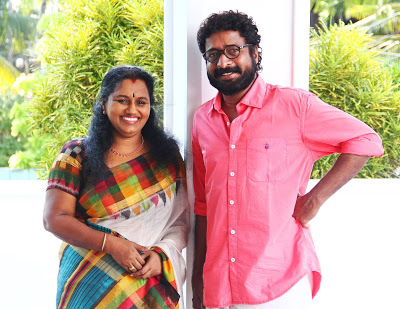 COLUMN: LOCATION DIARY
COLUMN: LOCATION DIARYActor Harisree Ashokan talks about his experiences in the films, 'Kudumbakodathi', 'Punjabi House', and 'Satyam, Shivam Sundaram'
Photo of Harisree Ashokan and wife Preetha by Mithun Vinod
By Shevlin Sebastian
One day, in the 1990s, Harisree Ashokan was relaxing in a hotel room in Aluva. This was during the shoot of the film, 'Kudumbakodathi', directed by Viji Thambi. Suddenly, a call came on the intercom. It was a young girl, who asked Ashokan whether she could come and see him tomorrow. He said okay, and told her to come by 11 a.m.
The next morning, an excited Ashokan sprayed some perfume inside the room, so that it would smell good. “You must understand this was the first time this was happening to me,” he says. So, he waited patiently, having told the director that he would come late to the set.
A little after 11 a.m., the doorbell rang. With a sense of anticipation, Ashokan opened the door. It was a 20-year-old girl, wearing a red salwar kameez. “I was taken aback by her beauty,” says Ashokan. “She stared at me with an amazed look. Then I said, 'Are you the girl who called me?' She said, 'Yes'. Then she suddenly said, 'I am going'.”
Ashokan felt puzzled. He did not why she left so quickly. “I became depressed,” he says. After a while, she called him on the phone. “I had come to see the other Ashokan [who has acted in films like 'Peruvazhiyambalam' and 'In Harihar Nagar'].” When Harisree Ashokan went to the set, he narrated the incident to the crew members and everybody had a good laugh.
There was a time when Ashokan himself had a good laugh. During the shoot of 'Punjabi House' (1998) in Kochi, the Thiruvananthapuram-based comic actor Indrans was feeling homesick. For three weeks, the shooting had been going on non-stop. But one day the production controller, Shanmughan, told Indrans that he did not have any shooting for the next two days, so he could go home.
Indrans got very excited. To show his joy, he mock-fisted Ashokan, and said, “I am going back home tonight.”
Ashokan took a lift in Indran's car. “He was dropping me home [at Vazhakalla], before he carried on,” says Ashokan. “Indrans was eating an orange. He was throwing the peels at the passers-by. I asked him what he was doing. He said, 'I feel so happy that I am going home.'”
The next day, at 7 a.m., Ashokan had a shooting schedule. But when he went to the set, Indrans was sitting there. “When I saw him, I burst out laughing,” says Ashokan. “I said, 'What happened?'”
Indrans said he had nearly reached home, when Shanmughan called and said, “You have a shoot early morning tomorrow. The other actor is not available.” Indrans immediately turned back. He did not even go home. “When I look back, it is a sad incident, but there was something funny about it,” says Ashokan.
On another occasion, Ashok and Cochin Haneefa were relaxing on the sets of 'Satyam Shivam Sundaram' (2000) at the Kakkanad bus stand at Kochi. Suddenly, a youngster came up and said that he could not fold his right arm. He said that there is an equipment which when placed at the elbow would straighten his arm. “Then I will be able to eat with my hand,” he said.
Both Ashokan and Haneefa were moved when he said this. Ashokan asked the price of the equipment. The boy said that it cost Rs 7500, but he had Rs 2500. So, he needed Rs 5000.
Haneefa said he would pay. Ashokan said, “No way, I will.” In the end, they tossed a coin and Ashokan called correctly. He told the youngster to come to his home the next day.
At 7 a.m., the youth arrived at Ashokan's home. “He showed me the slip from where the equipment could be bought,” says Ashokan. “I told him to give me the Rs 2500, and I would buy the equipment for him. He replied that he would get the money and come back.”
Thereafter, Ashokan never saw him again. “There are many who try these tricks, to make money,” he says. “But having met many such people in my life, I was not surprised.”
(A shorter version was published in The New Indian Express, Kochi, Thiruvananthapuram and Kozhikode)
Published on April 05, 2016 21:48
April 4, 2016
Nuggets Of Wisdom
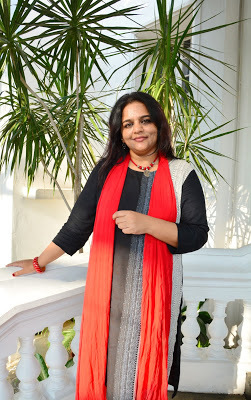 Motivational speaker Dr Ushy Mohandas tells women, during a seminar in Kochi, to be true to themselves and follow their dreams
Motivational speaker Dr Ushy Mohandas tells women, during a seminar in Kochi, to be true to themselves and follow their dreamsPhoto by Ratheesh SundaramUshy passes these nuggets of wisdom to thousands of people every month in India and abroad. Asked to compare domestic and international audiences, she says, “In the west, they have a stiff upper lip. But Indians are friendly, emotional, noisy, and distracted. They look at you, but most of the time they are not listening. So, I amplify my thoughts over theirs. I also observe their aura rather than their physical body. The body is just a sensor for the brain.”
Ushy pauses and says, “Use your brain to the optimum. Where there's a will, there is a highway.”
(The New Indian Express, Kochi and Thiruvananthapuram)
Published on April 04, 2016 21:58
A South African Outpost In Kerala
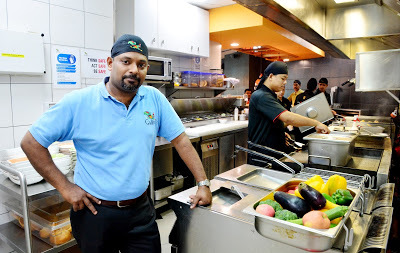
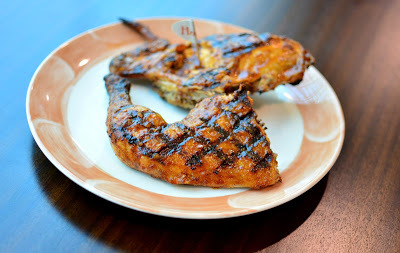 The Galito's Flame-Grilled Chicken restaurant, at the Lulu Mall, Kochi, serves an unique style of chicken
The Galito's Flame-Grilled Chicken restaurant, at the Lulu Mall, Kochi, serves an unique style of chickenPhotos: Brand chef Sunil Menon; photos by Ratheesh Sundaram
And the patrons seem to be a satisfied lot. The best attribute about Galito's is that you can order the level of the spices: lemon herb, mild, hot, and extra hot. “There are similar sauces also, if you want to enhance the spiciness at the table,” says Sunil. And the prices are affordable. It ranges from Rs 155 to Rs 680.
The customers, who enjoy this food, include youngsters, as well as those in the 25-45 year age group. “They want to try something new,” says Sunil. “Which is why they like to come to Galito's. But we need to come up with new and exciting dishes regularly, so that we can remain popular.”
(Sunday Magazine, The New Indian Express, South India and Delhi)
Published on April 04, 2016 01:00
April 1, 2016
Matching Horoscopes
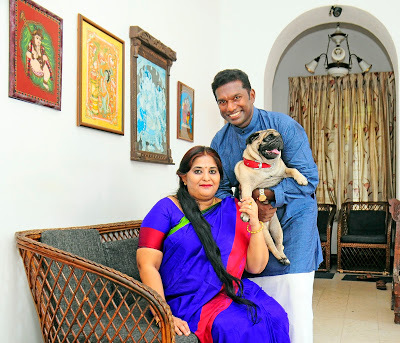
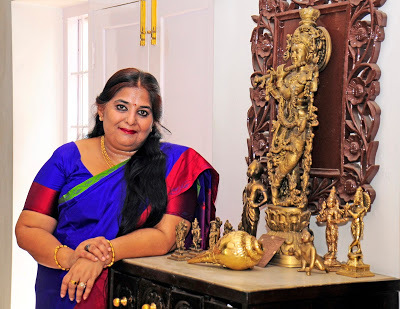 COLUMN: Spouse's Turn
COLUMN: Spouse's TurnVineetha talks about life with the businessman Rajmohan Pillai
Photos by BP Deepu
By Shevlin Sebastian
When Vineetha met Rajmohan Pillai, the younger brother of the famed businessman Rajan Pillai, at Thiruvananthapuram in December, 1987, she was struck by two things. “My first impression was that he was very dark, but he had an enchanting smile,” says Vineetha. “Secondly, he spoke very well and made me feel comfortable.”
At that time, Vineetha, a gold medallist (B.Com) from Kerala University, was doing her articleship in a chartered accountancy firm and was reluctant to get married. But the horoscopes matched, and being an only child, she did not want to disappoint her parents. So, she said yes. The marriage took place on September 12, 1988, at the Guruvayur temple.
Thereafter, for their honeymoon, the couple went to Mumbai. There, they went to the disco, 'Gatsby', at the Taj Mahal Palace Hotel. “It was a culture shock for me,” she says. “I started crying, seeing all the moving beams of light, and everybody wearing dresses and mini skirts.”
From there, they flew to Jaipur where they spent some time at the castle of Brigadier Sawai Bhawani Singh Bahadur, the former Maharaja of Jaipur. They also visited the Red Fort in Delhi as well as the Taj Mahal at Agra. Later, the couple settled down in Thiruvananthapuram.
Asked about her husband's plus points, Vineetha says, “Rajmohan is a calm person. Even if there is any tension in the office [The Beta Group] or at the [cashew nuts] factory, he will not bring it into the house. He is also a routine-oriented person.”
Rajmohan gets up at 3.30 a.m. and does yoga. At 5 a.m., he goes for a walk or a run and at 6 a.m., he goes to play tennis at the Trivandrum Tennis Club. “For breakfast he does not eat anything except fruits,” says Vineetha. “He does not drink or smoke or take coffee or tea. He has no addictions.”
This can be a negative also. “Maybe, Rajmohan is too much of a health freak,” says Vineetha. “In his earlier years, he enjoyed non-vegetarian food, and could consume a chicken all on his own.”
When Vineetha was carrying her first son, Rajkrishnan [who is 25 now and a businessman], for seven months, Rajmohan remained a vegetarian, as a sort of penance. After the baby was born, and it was placed next to Vineetha, on the bed, she felt puzzled when she got the smell of omelette. “I was wondering who was eating this,” she says. “Then I saw that it was Rajmohan who was having the omelette. That was when I realised how much he missed non-vegetarian food.” Incidentally, apart from Rajkrishnan, the couple have a 19-year-old son Rajnarayanan, who is doing his B. Com (Hons.) from Christ University in Bangalore.
Over the years, her husband has changed. “Rajmohan has become a spiritual person,” says Vineetha. “He believes that God is within you. But he has not convinced me in learning yoga. I continue to follow the traditional Hindu rituals of lighting a lamp and going to the temple.” In fact, at 3 a.m. on every Thursday, the couple pray at the Sree Padmanabhaswamy Temple.
Finally, when asked to give tips on marriage, Vineetha says, “Never discourage your partner. You must give him as much space as possible. Never tell anything bad about your husband’s family to the spouse. These are ties that last a lifetime. Rajmohan also told me that his parents are the most important people in his life, above me and the children. Every day, before he left for work, he would go and touch their feet.”
(The New Indian Express, Kochi, Thiruvananthapuram and Kozhikode)
Published on April 01, 2016 23:02
March 31, 2016
Captain Radhika Menon Is First Woman To Win Maritime Gallantry Award
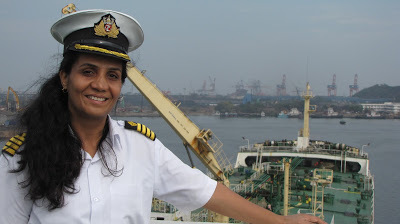 By Shevlin Sebastian
By Shevlin Sebastian Photo of Radhika Menon by Ch Kodandaramaiah
At noon, on June 22, 2015, second officer Manoj Chauhan, of the ship, ‘Sampurna Swarajya’, noticed a boat two-and-a-half kms away, off the coast of Gopalpur, Orissa. Owing to a deep depression there were fierce winds and rains. The wind speed was 60 to 70 knots, while the waves rose to a height of 25-27 feet. As a result, the boat was being tossed up and down.
Manoj informed Radhika Menon, the first woman captain of the Indian Merchant Navy. “When I looked through my binoculars, they were waving their shirts and asking for help,” says Radhika, who is from Kodungallur.Radhika immediately ordered a rescue operation. Because of the turbulent sea, it took three attempts before all seven were rescued. The fishermen, who ranged in age from the 15-year old Perla Mahesh to Narasimha Murthy, 50, were in bad shape. They were weak, starving and frightened. The food and water had been washed away. They survived by sucking on ice cubes from the cold storage, which is used for preserving the fish.On April 5, National Maritime Day, the National Maritime Day Celebration
Committee of India will confer the 'Seafarers Gallantry Award' on Radhika for rescuing the fishermen. She is the first woman to be conferred with this award at a function in Mumbai.
“I am humbled, honoured, and grateful to have been selected as a recipient,” says Radhika. “It is a maritime obligation to save souls in distress at sea and, as a seafarer and Master in command of my ship, I just did my duty. I am very grateful to my officers and crew who did a great job. This award will be a constant reminder of the support and appreciation that I have received. I promise to continue the seafaring tradition of helping others.”
And this brave woman has a simple advice to girls who want to follow in her footsteps: “She should not expect any special consideration just because she is a girl. She should know her work thoroughly, so that she can command the respect of others.”
(The New Indian Express, Kerala editions)
Published on March 31, 2016 22:17
March 30, 2016
The Childhood Memories Of Kalabhavan Mani
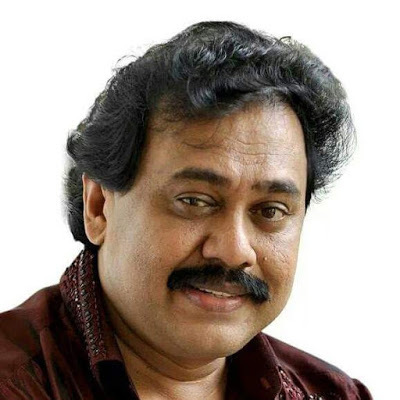
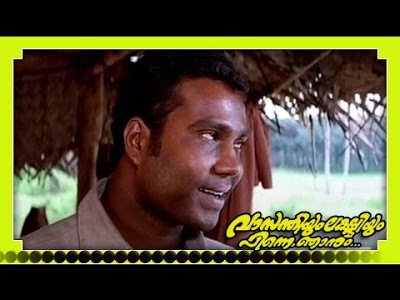
 COLUMN: LOCATION DIARY
COLUMN: LOCATION DIARY Director Vinayan talks about his experiences in the films, 'Vasanthiyum Lakshmiyum Pinnne Njaanum', and 'Karumadikkuttan'
Photos: Director Vinayan. Images from 'Vasanthiyum Lakshmiyum Pinnne Njaanum', and 'Karumadikkuttan'
By Shevlin Sebastian
Kalabhavan Mani walked down a narrow rope bridge in Thodupuzha, on an afternoon in June, 1998. He was playing a blind street singer, Ramu, in the film, 'Vasanthiyum Lakshmiyum Pinnne Njaanum'. On the river bank, there was an elderly washerwoman, called Nannitalla, played by a theatre artist called Ammini Kutty.
When Ramu heard the sound of the washing he asked whether it was Nannitalla. She replied in the affirmative. Ramu said, “Has Thomas Sir come?”
“How did you know?” said Nannitalla.
“When Thomas Sir's clothes are washed, there is a different sound,” says Ramu. “He gives me his old shirts and mundu. I wear his clothes all the time.”
Nanitalla said, “Why can't you buy some clothes yourself?”
Ramu said, “I don’t have any money. All my life I have worn only old clothes.”
Immediately, after saying this, Ramu started crying. “This weeping was not there in the script,” says director Vinayan. “But Mani was so immersed in the character that tears began to roll down his face. It was a magnificent performance. Once I shouted, 'Cut', all the crew members started clapping. Many unit boys went and hugged him.”
But as Vinayan was getting ready for the next scene,. Mani came next to him, and burst out crying. Vinayan asked Mani what had happened.
Mani said, “Sir, when the scene was taking place, I remembered my childhood. Till Class 9, I never wore a new shirt or trouser, even during the festivals of Vishu and Onam. My mother was a servant in a neighbouring house, where there was a boy, Rajesh, (name changed), who was of my age. I would wear his old clothes and go to class. But, at the school, when Rajesh would see me, he would give me a mocking grin.”
When Mani recounted this incident, everybody, including Ammini Kutty started crying. “So I stopped the shoot, even though it was only 3 p.m.,” says Vinayan. “We were all upset.”
There were other emotional moments, too. In the 2001 film, 'Karumadikkuttan', Mani played a mentally-challenged man, who would do anything if you asked for his help. There was a landlord by the name of Pranchi Sir (played by drama artist Santosh), who was asthmatic. One day, according to the script, he fell ill, but there was no vehicle to take him to the hospital.
At the location, at Kuttanad, Mani said that he would carry Santosh, on his shoulders, even though the latter weighed 90 kgs. “And with ease, Mani lifted up Santosh, placed him on his shoulders, and ran forward at full speed,” says Vinayan. “That was because he had a childhood experience that enabled him to do it.”
When Mani was in the primary section of a government school at Chalakudy, rice sacks would be brought to the school. The school would hire headload workers to transfer the sacks from the gate to the store room. “That was when Mani opted to do the job,” says Vinayan. “He would get Rs 1 for this work. And he always gave the money to his mother. As a result, it made him strong. So, he had no problem in lifting up Santosh.”
Vinayan pauses, at his home in Kochi, shakes his head sadly, and says, “Mani was a great actor. So, it has been an unbearable loss for Malayalam cinema that he had an untimely death.”
Mani died, on March 6, at the age of 45, at Chalakudy.
(The New Indian Express, Kochi, Thiruvananthapuram and Kozhikode)
Published on March 30, 2016 21:39
March 29, 2016
Different perspectives of life
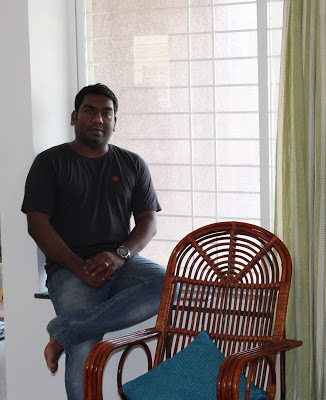
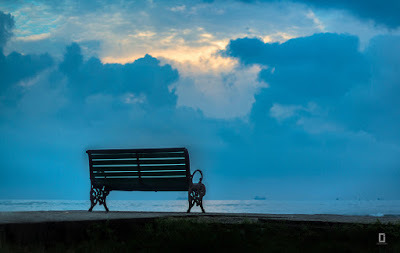
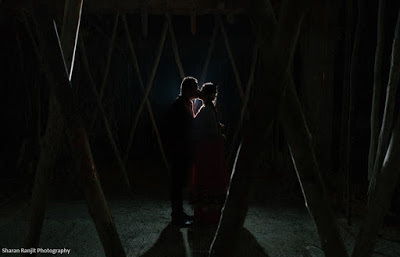 Jayakrishnan Pillai has started a popular web site called 'One Frames Stories', where writers can look at a photo and tell a story in 99 words
Jayakrishnan Pillai has started a popular web site called 'One Frames Stories', where writers can look at a photo and tell a story in 99 wordsBy Shevlin Sebastian
About a year ago, young entrepreneur Jayakrishnan G Pillai was sitting around with his friends, Anup Joy and Jan Joseph, and having a chat at Kochi. “We were discussing about how it was becoming difficult for people to accept different opinions,” says Jayakrishnan. “Then we realised that it is a matter of perspective. What I see is not what you might see. That is the case when you look at a photograph or read a story.”
So the trio decided to do an experiment. They posted a photograph of a bench on a beach in Fort Kochi. It was placed facing the sea. There are clouds in the sky. It is an evening scene. And there is a sliver of sunlight against the edge of the clouds. They asked their friends to respond to it.
Initially, they decided to give a word count of 140 characters, like a tweet. “Then we decided it should be 100 words, but realised 99 is a catchy number," says Jayakrishnan. "So we stuck to that.”
In the first attempt, they got 18 stories and as many different perspectives. “That was when we realised that we had a special idea,” says Jayakrishnan. “So we started ‘One Frame Stories’, which is being coordinated by my colleagues, Deepthi S. and Sejal Waghmare, through our company Heyyo Media.”
So far, they have put up 76 frames on a weekly basis. The total number of stories is 3299, written by 798 participants.
The writers include doctors, IT professionals, engineers and home-makers and come from everywhere: India, Romania, Sri Lanka, England and Kazakhstan. “It is a platform where people can show their creativity,” says Jayakrishnan. “However, one of the most interesting aspects is how every person looks at a frame in a different and unique way.”
Indeed, it is true. In one image, a man and woman are kissing in an enclosed area, made of bamboo poles. It is dark, except for a dim light shining on their faces.
And here is writer Shoumik’s story, ‘The First Kiss’ in 99 words:
He never wanted to marry her.
He was still waiting for the first love, a picture of a little girl he found on a bus. Years later his wife found that picture and asked him about it.
He confessed that he married her due to family pressure but he was always in love with the girl in the picture.
“Where did you find it?”
“In the bus on the way to school. Why do you ask?” he said.
“Because I lost it when I was little,” she said.
Parents of two shared their first kiss... years after their marriage.
Renu Kaliyath’s response to the same picture, titled, ‘Stolen Moments’, is completely different:
He was a prominent gay lawyer for the LGBT community, she was a national award-winning closet lesbian actress.
They met at a rally, when their community was protesting a discriminating law.
At first sight they felt the connection, though both of them were in a committed loving relationship.
Moreover their cause was greater than love.
It was out of question trying to take their love forward.
Their only solace was intense stolen moments in dark and forbidding places.
Jayakrishnan smiles and says, “This happens all the time. If I put up a frame, with a river in it, some will react as if it is a fight between two states over water, while others will say it is an opportunity for fishermen.”
Jayakrishnan wants to pass an underlying message. “We should learn to appreciate and accept other people’s perceptions,” says Jayakrishnan. “Once we do that, it will solve a lot of problems in our country.”
(The New Indian Express, Kochi and Thiruvananthapuram)
Published on March 29, 2016 05:29
March 27, 2016
A Stirring Return
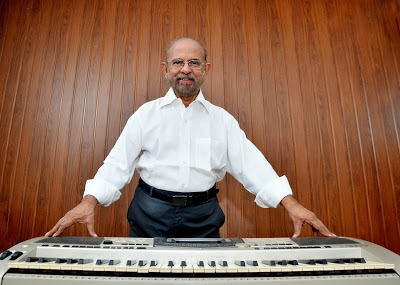
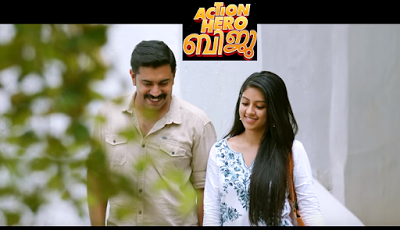 Veteran music composer, Jerry Amaldev, after a hiatus of twenty years, produces melodious songs for the Mollywood hit film, ‘Action Hero Biju’Photo of Jerry Amaldev by Ratheesh Sundaram; Nivin Pauly and Anu Emmanuel during the picturisation of the song, 'Pookkal Panineer'
Veteran music composer, Jerry Amaldev, after a hiatus of twenty years, produces melodious songs for the Mollywood hit film, ‘Action Hero Biju’Photo of Jerry Amaldev by Ratheesh Sundaram; Nivin Pauly and Anu Emmanuel during the picturisation of the song, 'Pookkal Panineer' By Shevlin Sebastian
At a studio in Chennai, the twenty-odd musicians took their places behind the instruments – the violin, cello, bass guitar, viola, mandolin, xylophone, tabla, dholak, and the flute. As soon as the music began for the song, 'Pookkal Panineer', for the Mollywood film, 'Action Hero Biju', on a day in November, 2015, the musicians looked at each other with an amazed look.
Then, one of the senior musicians, Chitty Prakash Rao, came up to the veteran composer, Jerry Amaldev, and said, “We were thirsting for this kind of melody for the past twenty years. There is no heart in the songs of today. It is just noise and shouting. The music does not hit you.”
But 'Pookkal Panineer' did hit the hearts of listeners. What helped was the beautiful picturisation, set in Fort Kochi, featuring the actors, Nivin Pauly and Anu Emmanuel, and accompanied by the evergreen voices of legends KJ Yesudas and Vani Jairam. “It is a love song,” says Amaldev. “So, I put in a few quiet moments in it. In life, you don't tell somebody, 'I love you', 'I love you' in a rush. Instead, you say it once and wait for the effect. And I also waited in the song.”
The other songs by Amaldev – 'Chiriyo Chiri', 'Hara Hara', 'Oonjalilaadi Vanna' and writer Rabindranath Tagore’s composition of 'Vande Mataram' – were all received well.
And Amaldev has returned with a bang, after a hiatus of two decades. Asked the reason for the gap, he says, “Nobody called me. I have been in Kochi all along.”
Amaldev’s comeback happened when a middle-aged film professional dropped to see him at his home a few months ago. He was Abrid Shine, the director of 'Action Hero'. “Shine told me that he was tired of the electronic music and was looking for good melodies and the use of acoustic instruments,” says Amaldev. Convinced of Shine's sincerity, Amaldev, 76, agreed to compose the music.
This never-say-die composer has had an unusual life. Born in Kochi, Amaldev decided to become a priest when he was a teenager. So, he joined the Society of the Divine Word in 1955 at Indore and came under the tutelage of German priests. Having a talent for music, for the next ten years, Jerry learnt the tabla, piano, organ, as well as north Indian classical vocal music. But soon, he felt that priesthood was not for him and quit.
Thereafter, he left for Mumbai, and got lucky when he became an assistant to the legendary Hindi composer Naushad. During the five years that he worked with Naushad, he received some valuable tips from the maestro. “The life of the song is in the lyrics,” said Naushad. “When you know the words, you can give the melody. When you have the melody you can provide the instrumentation.”
After five years with Naushad, Jerry got a scholarship to study music at Cornell University in New York. After getting his master’s degree, Jerry spent several years teaching music in America before he decided to return to Kochi in 1980, and got his first Mollywood film, 'Manjil Virinja Pookal'.
The songs of this film became huge hits and remain popular. And he became the first composer in India to win a State Award (Kerala) for excellence in Music Direction for a debut film. Thereafter, he composed 300 songs for 75 films before he fell out of favour.
But, today, this senior citizen is getting offers again, ensuring that he enjoys a late second innings in Mollywood. But Amaldev says, “When you play music, you are ageless.”
(Sunday Magazine, The New Indian Express, South India and Delhi)
Published on March 27, 2016 22:14



